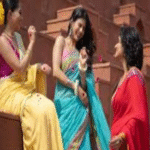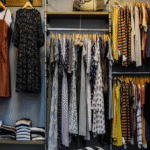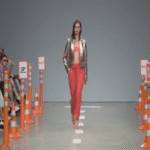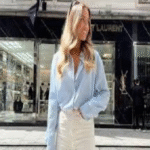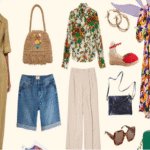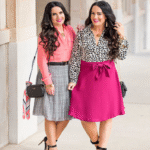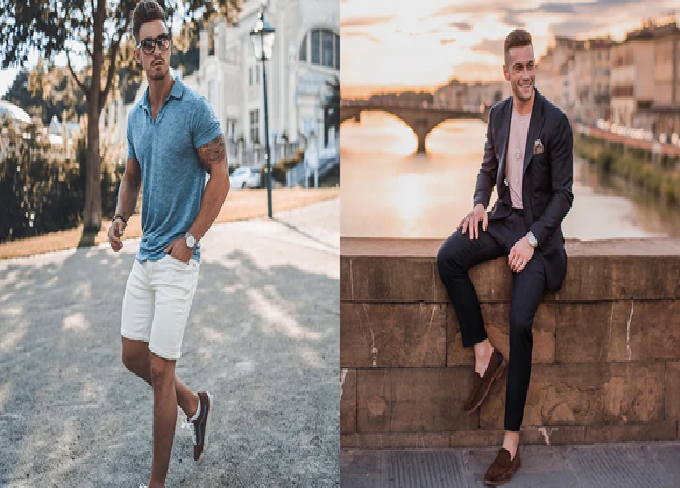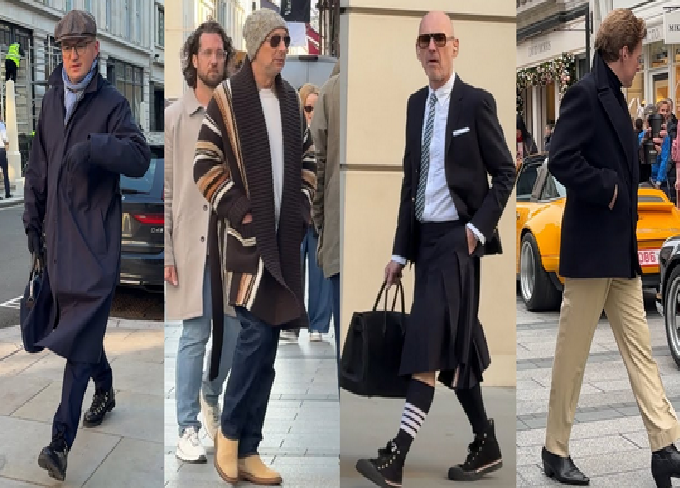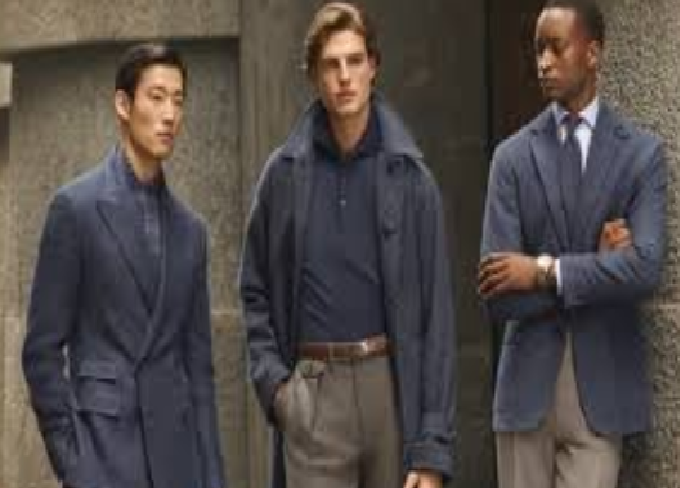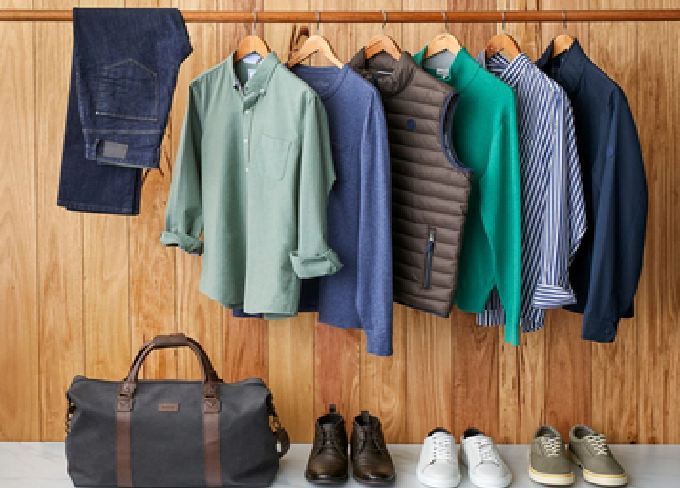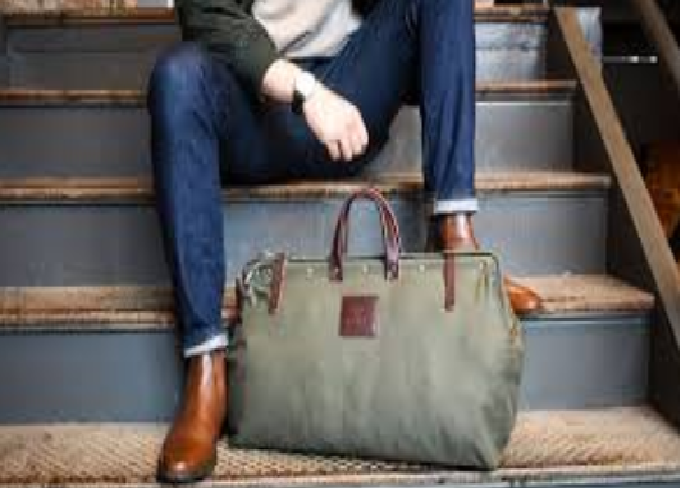They say the first impression is the last impression — and it’s true. How you dress speaks volumes about your confidence, personality, and attention to detail. Whether it’s a formal business meeting, a casual hangout, or a festive wedding, knowing how to dress for the occasion can make you stand out effortlessly. Dressing well isn’t about wearing expensive clothes; it’s about understanding what fits, what suits your body type, and how to adapt your wardrobe to any event.
This detailed guide breaks down men’s fashion for different occasions — from formal to casual — so you can always look sharp and appropriate no matter where you go.
1. Understanding Dress Codes
Before diving into specific occasions, it’s important to understand the basic dress codes that form the foundation of men’s style.
Formal Attire
This is the most sophisticated level of dressing. Think tuxedos, tailored suits, polished shoes, and ties. Formal dress codes are often required for black-tie events, business meetings, or weddings.
Semi-Formal
Semi-formal outfits are slightly more relaxed than formal wear. A tailored suit, collared shirt, and loafers or dress shoes are appropriate. You can skip the tie in some cases but keep the outfit sharp.
Business Casual
Business casual strikes a balance between professional and relaxed. It includes chinos or dress pants, button-down shirts, and blazers. It’s the go-to choice for office settings or conferences.
Smart Casual
This is where style meets comfort. Jeans or chinos paired with a crisp shirt, blazer, or even a neat sweater make a stylish yet relaxed statement.
Casual
Casual outfits focus on comfort and personality. T-shirts, jeans, polos, and sneakers dominate this category, perfect for daily wear and informal gatherings.
2. Dressing for Work and Business Meetings
Corporate and Office Settings
For office environments with strict dress codes, a tailored suit is your best friend. Choose classic colors like navy, charcoal, or black. Pair it with a light-colored dress shirt and a silk tie.
-
Pro Tip: Ensure your clothes fit perfectly — no baggy sleeves or overly tight pants. Fit is what makes or breaks your look.
-
Shoes: Opt for oxford or derby shoes in black or brown leather.
-
Accessories: Keep it minimal — a watch, tie clip, and a subtle belt complete the look.
Business Casual Offices
If your workplace has a business casual vibe, skip the suit but maintain a polished appearance. Pair chinos or tailored trousers with a crisp shirt or polo. Layer with a blazer or lightweight sweater when needed.
-
Shoes: Loafers, brogues, or monk straps add sophistication.
-
Colors: Earthy tones like beige, navy, olive, and gray look professional yet modern.
3. Dressing for Formal Events
Formal events — like galas, award nights, and weddings — call for impeccable attention to detail.
Black Tie Events
A black tuxedo with a white dress shirt is the gold standard. Pair it with a black bow tie, patent leather shoes, and a pocket square for an elegant touch.
-
Fit Tip: Your tuxedo jacket should hug your shoulders naturally, and pants should have a slight break above your shoes.
-
Avoid: Loud colors or flashy accessories; simplicity exudes class.
Weddings
Depending on the dress code, you can go for a full suit or a tuxedo. For daytime weddings, lighter colors like beige, light gray, or sky blue look great. Evening weddings call for darker shades like navy or charcoal.
-
Accessories: A silk tie, pocket square, and cufflinks elevate your outfit.
-
Footwear: Polished dress shoes or loafers work best.
4. Dressing for Casual Outings
Casual dressing doesn’t mean sloppy dressing. It’s about looking comfortable while staying stylish.
Weekend Hangouts
A pair of well-fitted jeans and a T-shirt is timeless. Add a denim jacket or bomber for extra flair. Sneakers or casual loafers keep things laid-back yet polished.
Day Trips or Lunch Dates
Chinos paired with a polo shirt or casual button-down shirt strike the right balance. Roll up your sleeves for a relaxed touch.
-
Colors: Experiment with pastels, olive greens, and navy blues.
-
Accessories: Sunglasses and a casual watch enhance your look effortlessly.
Smart Casual Evenings
For dinner with friends or a date, go for dark jeans, a crisp shirt, and a blazer. You’ll look relaxed yet refined.
-
Pro Tip: Swap sneakers for leather loafers or Chelsea boots to instantly upgrade your outfit.
5. Dressing for Parties and Social Gatherings
When it comes to parties, it’s about expressing personality without overdoing it.
Cocktail Parties
A blazer with dress pants or dark jeans and a stylish shirt creates a balanced look. You can experiment with textures like velvet blazers or patterned shirts for a bold yet elegant vibe.
-
Colors: Deep shades like burgundy, navy, and forest green stand out.
-
Shoes: Polished loafers or sleek boots work best.
Birthday Parties or Casual Celebrations
You can go for casual but trendy. A slim-fit T-shirt layered with an open shirt or lightweight jacket adds dimension. Pair with jeans or chinos and clean sneakers.
6. Dressing for Weddings (As a Guest)
When you’re not the groom but a guest, your goal is to look stylish without overshadowing the main event.
Day Weddings
Light-colored suits (beige, light gray, or pastel blue) with a white or light pink shirt look fresh and appropriate for daytime.
Evening Weddings
Choose darker tones like navy or charcoal with a tie that complements your outfit. Add a pocket square for extra sophistication.
-
Avoid: Overly loud patterns or white suits — they can draw unnecessary attention.
7. Dressing for Dates and Romantic Evenings
When it comes to dating, your outfit should make you feel confident and approachable.
Casual Coffee Dates
Opt for smart casual: dark jeans, a well-fitted T-shirt, and a jacket or blazer. The goal is to look effortless but put-together.
Dinner Dates
Go a level higher with chinos and a crisp shirt. A fitted blazer adds instant charm. Choose subtle fragrances and make sure your shoes are clean.
-
Colors: Neutrals like navy, beige, and gray exude calm confidence.
-
Pro Tip: Roll up your sleeves for a more relaxed, charming appearance.
8. Dressing for Outdoor Events
Outdoor gatherings require practicality along with style.
Picnics and BBQs
Lightweight fabrics like cotton or linen are perfect. Pair shorts or chinos with a polo shirt or a casual short-sleeve button-down.
-
Footwear: Boat shoes, espadrilles, or slip-on sneakers are ideal.
-
Accessories: A pair of sunglasses and a hat complete the relaxed vibe.
Beach Parties
Go for swim shorts, a tank top, or a linen shirt. Flip-flops or sandals are acceptable here, and sunglasses are a must.
9. Dressing for Seasonal Occasions
Summer
Light colors and breathable fabrics like linen and cotton are your best friends. Avoid heavy layers — a short-sleeve shirt or polo with chinos keeps things cool.
Winter
Layer smartly. Start with a thermal undershirt, followed by a sweater or turtleneck, and finish with a wool coat or leather jacket. Don’t forget scarves and gloves for both warmth and style.
Spring and Fall
These are transition seasons, so layering is key. Pair shirts with light jackets or cardigans. Play with textures like suede and denim for a stylish edge.
10. Dressing for Travel
Travel outfits should balance comfort and style.
Airport Look
A pair of stretch jeans or joggers with a T-shirt and bomber jacket works perfectly. Sneakers are ideal for long walks through terminals.
-
Pro Tip: Choose wrinkle-free fabrics so you look fresh upon arrival.
-
Accessories: A minimalist backpack or leather duffel bag completes your travel style.
Vacation Outfits
Pack versatile items that you can mix and match — chinos, polos, and lightweight shirts. Always bring a neutral blazer for dressier dinners.
11. Dressing for Festivals and Cultural Events
Festivals and cultural events are a great chance to showcase traditional or contemporary flair.
Traditional Outfits
In South Asian cultures, shalwar kameez or kurta with a waistcoat or blazer looks elegant. Choose fabrics according to the season — cotton for summer, silk or wool for winter.
Modern Touch
You can mix traditional and modern by pairing a kurta with slim trousers or jeans. Add loafers or traditional shoes like khussas for authenticity.
12. The Importance of Fit and Fabric
No matter the occasion, fit and fabric make all the difference.
-
Fit: Clothes should complement your body — not too tight, not too loose. Tailoring is worth the investment.
-
Fabric: Choose breathable fabrics like cotton and linen for hot weather, and wool or tweed for colder months.
13. Grooming and Accessories Matter
Even the best outfit can fall flat without proper grooming.
-
Hair: Keep it clean and styled neatly according to your face shape.
-
Beard: Maintain a well-groomed beard or stay clean-shaven — whichever suits you best.
-
Accessories: A watch, belt, and subtle bracelet or ring can elevate your style. Avoid over-accessorizing.
-
Fragrance: A light, long-lasting cologne adds a final touch of sophistication.
14. Building a Versatile Wardrobe
To make dressing for any occasion easy, build a capsule wardrobe.
Essentials to include:
-
Two well-fitted suits (navy and gray)
-
White and light blue shirts
-
Dark jeans and chinos
-
A few polos and T-shirts
-
A versatile blazer
-
Leather shoes, loafers, and sneakers
This foundation allows you to mix and match effortlessly for multiple events.
15. Confidence: The Final Touch
The most important accessory you can wear is confidence. Even a simple outfit looks amazing when worn with self-assurance. Stand tall, smile, and maintain good posture. Confidence transforms an average look into an unforgettable one.
Conclusion: Mastering the Art of Dressing for Every Occasion
Dressing well doesn’t require a stylist or a massive wardrobe. It’s about understanding what fits, what works for the occasion, and how to express your personality through clothing. From formal business meetings to relaxed weekends, each occasion calls for a unique approach — and with the right knowledge, you can master them all effortlessly.
